Ora et Labora.
Ora et labora
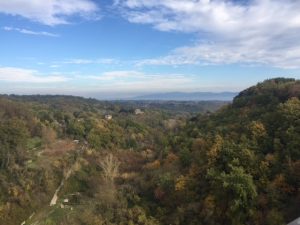
The monks know it! they chose, they treasured it, maybe they suffered but now they know it
it does not necessarily need to be perfect, the beauty of the world lies in its flaws.
I do not want to become involved in religious discourse, but to underline how monastic communities are the most unknown, we have ideas, suppositions but in reality we do not know anything about them.
Within those ancient places, which have saved and developed European culture, poor human beings are rich; they are rich in their work, they are rich in knowing how to use their hands, they are rich in their beliefs and their choices; they make unchangingly unique timeless activities that we all have forgotten … Art, Arts, Crafts.
Ora et Labora.
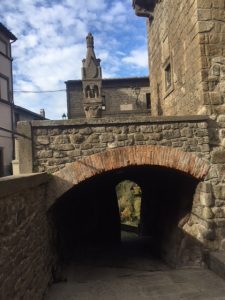
You do not need to dream of Burgundy if you do not know your territory, in fact you risk not understanding anything; the monasteries in this are among the greatest connoisseurs of their territory because sometimes they live and care for a thousand years.
What many people do not know is that there are things that monks and nuns do well and are very good at creating a thriving community from a barren plain: these people are not afraid of time.
Trust me if I tell you that they are good winemakers, beekeepers and as you all know, amazing brewers; but what I did not know is that not all the monasteries are equal and in each of them there is something that makes them unique.
In some cases there are people who show you how stupid you were to not pay attention to the small things of the earth, to those slow movements, punctuated by ancient cycles. Nature knows everything, nature can not be controlled or caged, but very slowly we learn to live with it, trying to make a treasure with it: the Wine.
Ora et Labora.
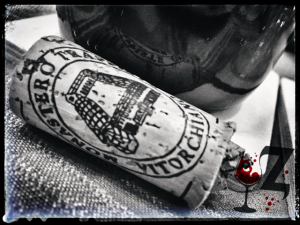 In Vitorchiano there is a Trappist monastery, not a normal one (if you can speak of normality) there is a monastery there … .. well now I have to choose very well the words I will use.
In Vitorchiano there is a Trappist monastery, not a normal one (if you can speak of normality) there is a monastery there … .. well now I have to choose very well the words I will use.
In Vitorchiano there is a cloistered monastery, where about eighty nuns live their life of prayer and work far from the world and perfectly integrated into it, wise and capable yet enigmatic and elusive: a community that smiles at you even if you do not show and who shows himself with his works.
Why am I telling you all this? Because these sisters cultivate a vineyard that has ripped stone after stone, year after year to the earth. The earth is rich in volcanic stones (the so-called peperino) and then a land invaded by rocks and brambles.
Ora et Labora.
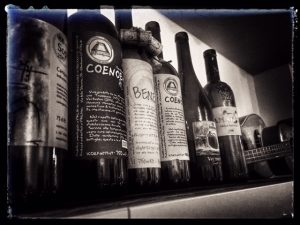 Where everyone saw a hill gibbous, full of weeds, stinking, backbreaking, sterile and suitable perhaps to graze the goats, they saw an Eden.
Where everyone saw a hill gibbous, full of weeds, stinking, backbreaking, sterile and suitable perhaps to graze the goats, they saw an Eden.
A single person would desist, a family too, too much work and few fruits at least in the short term; but they are a community that since 1957 have never reasoned in the short term.
They had chosen to stay there, they had chosen to work there, they had chosen to produce them, and that land, although tough and difficult, was tame, but not short-term, there were people who were not afraid of the weather.
Ora et Labora.
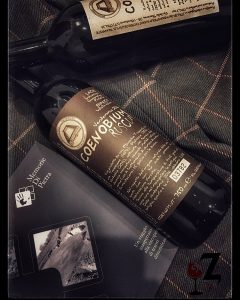 Manual labor ennobles and puts us in communion with the world around us; fatigue creates respect for what we eat or drink and this respect is one of the bases for knowing a territory.
Manual labor ennobles and puts us in communion with the world around us; fatigue creates respect for what we eat or drink and this respect is one of the bases for knowing a territory.
But you will wonder that all this with the wine, be patient.
The work of these women at some point leads her to want to risk a difficult choice, work the land respecting the land, work the vineyard not to win prizes but to give grace (even eucharistically speaking) to God.
Planting a vineyard, with the traditional grape varieties of that area: so no Merlot or Cabernet, but only Trebbiano, Malvasia, Grechetto and Verdicchio, take care of that vineyard without needing to use any chemical product: if it has to grow it is for the obstinacy and for work not because weedkillers or pesticides have been used.
In questo ricevono l’aiuto di un Enologo che più di tutto è un fautore di un pensiero: Giampiero Bea uno dei grandissimi del vino mondiale.
Giampiero Bea is a hero.
In an article you should not write the same thing twice, well Giampiero Bea is a hero.
A man who has always talked about an enology that is not invasive and that is not fake: for him the colors and the smells of a wine should be encouraged to be born as they are and not as one would like; the wine must not be tamed nor the vine must be bent to human demands, it is the man who bends as a keeper, he is a connoisseur, a poet who recites to the earth a story made of sacrifices and which is repaid by a bunch.
This philosophy has led Bea to collaborate sometimes with some companies (I have found so far two) but a little ‘for its labels that become a trademark (moreover I love them) a little’ for this philosophy, the wines where he advises for me are something very special.
So following the principle
Ora et Labora.
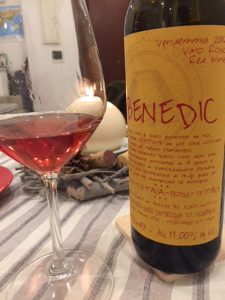 Well the Vitorchiano Sisters produce three wines! Of which one I believe was born this year and are practically only purchased by them at the monastery (or in a couple of e commerce) these are wines that must be understood even before they are drunk; two whites, one of which is macerated and one red.
Well the Vitorchiano Sisters produce three wines! Of which one I believe was born this year and are practically only purchased by them at the monastery (or in a couple of e commerce) these are wines that must be understood even before they are drunk; two whites, one of which is macerated and one red.
Let’s start with the red ,; right away you’ll think that I’m wrong because you say in the manuals “read this without ever having drank anything and become a Jedi master of wine” that starts with the whites.
The red of the sisters is called: “benedic” harvest 2016.
Benedic.
This wine has all its history on the label and I think it is a good and fair thing to cover it up
“This wine was produced by us, Trappist nuns from red grapes grown near our monastery.
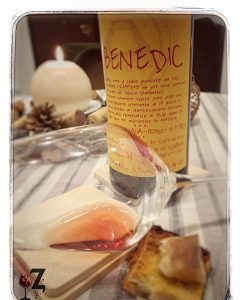 We obtained this wine after a spontaneous fermentation of 15 days and without forced stabilization processes. Serve at a temperature of 14-16 degrees and use care when handling the bottle. ”
We obtained this wine after a spontaneous fermentation of 15 days and without forced stabilization processes. Serve at a temperature of 14-16 degrees and use care when handling the bottle. ”
Finally, the data that interested me to give you 11% alcohol volume.
Antique Show !!!!
So in the time when everyone is pushing to have alcoholic, powerful, thousand thousand times fruity and almost chewable wines, our heroines are committed to making a wine that in Italy in a restaurant would not order many.
Because?
The most true and simple answer is that the wine was originally a food, and when in the vineyard and in the cellar does not operate invasively, you run the beautiful risk of being able to find yourself holding a light and elegant wine.
A wine that has an almost rosy color that is slightly reminiscent of rose quartz.
Now you know very well that I hate to make the descriptive cards and in fact I will not do it! do as I go to you and take a bottle, and yet I want to describe this wine in my own way
For me this is their first wine and I will also continue with the next two to tell you this way.
The second wine we are talking about is called:
Coenobium vendemmia 2016 igt
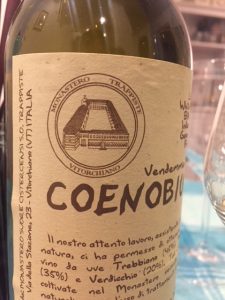 The label reads this:
The label reads this:
“Our careful work, assisted by the cycles of nature, has allowed us to obtain this wine from grapes produced from Trebbiano grapes (45%), Malvasia (35%), Verdicchio (20%). These grapes are grown in the monastery according to natural methods, without the use of synthetic chemistry treatments. In respect of the natural origin of the grapes, this wine has not undergone processes of forced stabilization. “
Vol 12% production 19000 numbered bottles.
What big surprise!!
I admit this wine I took it just to have it, and in fact I bought only three bottles (also red) and I immediately regretted it; since in this wine I find the paradigm of what I like or imagination, amazement and a lot of substance.
 Attention I do not want to say that this is one of those woody white and granite (which in some cases I like) but only that despite the ease in which you drink every sip and every sniff are new notes and everything: the smells of herbs field. Believe me it really made me crazy and in fact jealously guard the other two (even if it turns that turns you know that I will do another excursion).
Attention I do not want to say that this is one of those woody white and granite (which in some cases I like) but only that despite the ease in which you drink every sip and every sniff are new notes and everything: the smells of herbs field. Believe me it really made me crazy and in fact jealously guard the other two (even if it turns that turns you know that I will do another excursion).
To describe this wine to you, it may seem that I have fallen into the obvious; but this song represents very well for me.
And finally the last of our incredible triptych
Coenobium Ruscum vendemmia 2016.
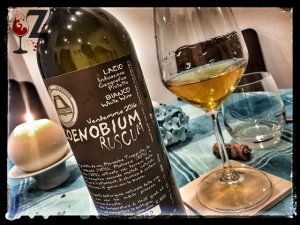
“Wine produced by us Trappist nuns, from Trebbiano grapes (45%), Malvasia (35%) and Verdicchio (20%), cultivated in the grounds of monastic enclosure according to natural methods, without the use of synthetic chemistry treatments. Fermentation 15 days with the skins. In respect of the natural origin of the grapes, this wine has not undergone processes of forced stabilization. ”
Vol 12% 5,300 bottles.
What an amazing wine !!!!
Initially I had gone to Vitorchiano for this wine and not for the others and in fact I took away a bit ‘of bottles.
The mistake was not to take other bottles even the first two because of their beauty, but this wine Lettori mia is a show.
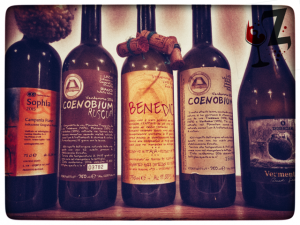 A vibrant balance between the strength of mother nature and the steady and gentle hand of people full of respect for it.
A vibrant balance between the strength of mother nature and the steady and gentle hand of people full of respect for it.
You see how to make an “orange” or good macerated wine is very difficult because you have to find the compromise between self-celebration (I was very good I made a wine macerated six years in the skins) and easy drinking; but in this the monastic rule is an integral pacifier because these women who have dedicated themselves to a life of prayer and not worldliness, a life made of hard work, want to create a good and just good wine.
And it is.
The apple dominates over everything to kind and mature … but as usual I do not make descriptions
But for the last time I use a musical commentary

Ora et Labora.
Well, we have reached the end of this journey inside a microcosm; in my case it made me think about being less stupid and not preclude the possibility of changing my mind.
But there are still two things I have to say: respecting the place and the people I have not taken pictures in the monastery, I went there on a Sunday and they usually do not open the shop on Sundays, the only place where it is possible, through a grate buy their things (all the other amazing … .the chestnut jam … I scream: the chestnut jam) only one sister was allowed to talk to us; that woman, strong, had a smile, that upset, because it was a look and a face of a person who had a purpose; believe me on the street I do not always see it.
And finally in Vitorchiano there is one of the very few (in Italy the only one, in Europe I do not know) Statue coming from Easter Island. This Mohai who looks at you and who is there to remind you that the journeys of life are endless.
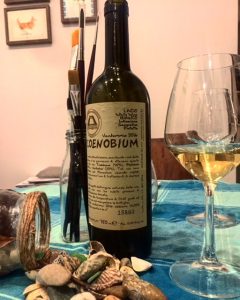 Attention I do not want to say that this is one of those woody white and granite (which in some cases I like) but only that despite the ease in which you drink every sip and every sniff are new notes and everything: the smells of herbs field. Believe me it really made me crazy and in fact jealously guard the other two (even if it turns that turns you know that I will do another excursion).
Attention I do not want to say that this is one of those woody white and granite (which in some cases I like) but only that despite the ease in which you drink every sip and every sniff are new notes and everything: the smells of herbs field. Believe me it really made me crazy and in fact jealously guard the other two (even if it turns that turns you know that I will do another excursion).